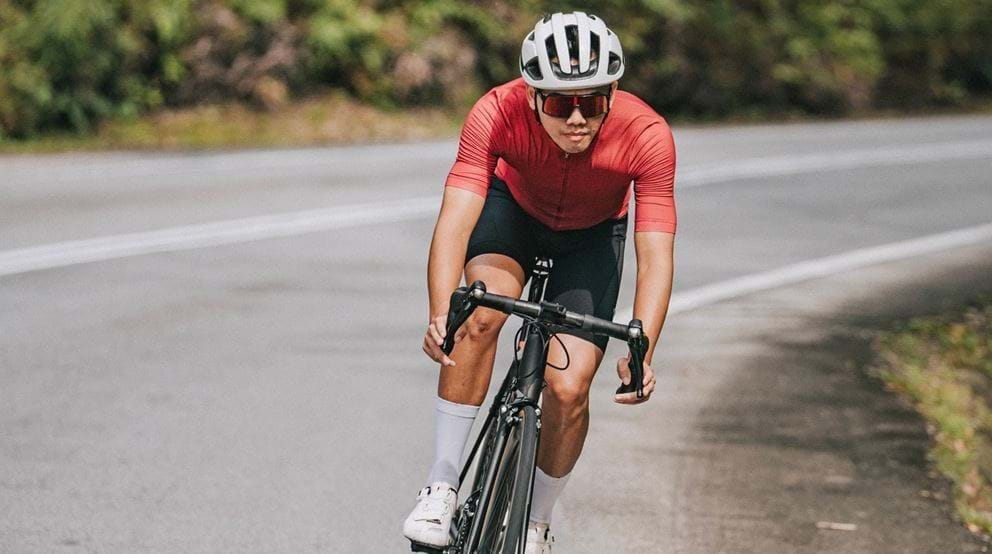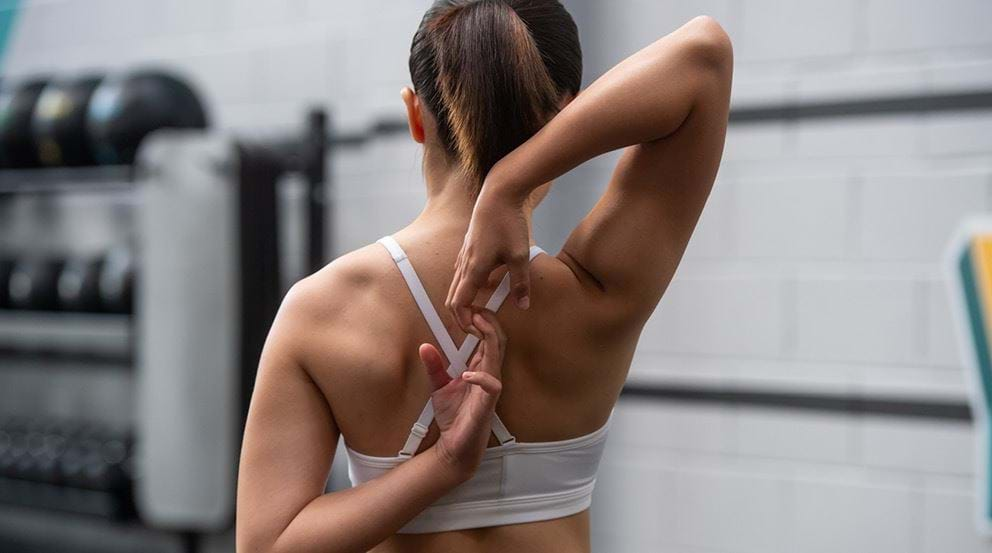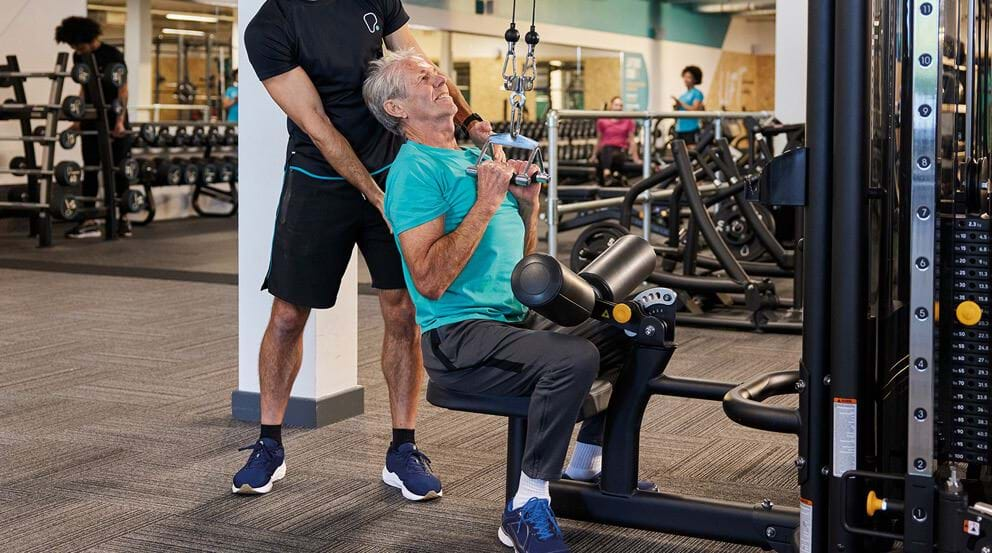Yoga And Stretching For Cyclists: Benefits And Poses To Try

Benefits Of Yoga For Cyclists | Yoga Before Or After Cycling | 8 Best Yoga Poses For Cyclists
Cycling and yoga may seem like two vastly different activities, but they can complement each other in surprising ways. In this article, Mona Alkayyal, PureGym Nottingham Castle Marina based personal trainer, yoga teacher, Pilates instructor, and cycling enthusiast, shares her insights on how the practice of yoga can enhance cycling performance and overall well-being.
Read on to learn about the benefits of yoga for cycling fans, whether it's better to stretch before or after your ride, and gives some examples of her favourite yoga poses for cyclists.
How Is Yoga Good For Cyclists?
As an indoor cycle instructor and occasional outdoor cyclist, incorporating yoga in my training programme has helped me a lot and I'm continually seeing the mental and physical advantages of combining the two exercises.
Yoga is often celebrated for all the incredible ways it can benefit our minds and bodies, but there are several ways it can help cyclists in particular. Here are some of the ways yoga can help cyclists:
Improved flexibility
Yoga involves a wide range of poses that stretch and strengthen different muscle groups throughout the body and is well known for its ability to improve flexibility as a result. While improving flexibility is beneficial to everyone, it's particularly important for cyclists as the repetitive nature of cycling can create tightness in the hips, hamstrings, shoulders, and lower back. Improving flexibility and mobility in these areas can reduce discomfort and risk of injury.
Increased strength
While cycling predominantly works the lower body, yoga engages a broader spectrum of muscles, including the core, arms, and upper body, and smaller stabilising muscles throughout the body. Practicing yoga contributes to overall strength and stability, enhancing cycling performance and reducing the likelihood of muscle imbalances and injuries.
Enhanced balance and stability
Holding and transitioning between different yoga poses requires a lot of balance and coordination and strengthens the core and stabilising muscles. This can translate to better stability and balance on the bike. This is crucial for handing various terrains and maintaining control during rides.
Improved posture
Long hours bent over on a bike with the neck extended can cause your upper body to become fatigued and stiff which, when combined with tight lower back and leg muscles from cycling, can cause poor posture. Yoga can help with this in two ways: by strengthening and stretching the muscles to correct imbalances, and by encouraging awareness of body alignment to promote better posture both on and off the bike.
Better breath control
Yoga emphasises controlled and mindful breathing, and practicing regularly can strengthen the diaphragm and improve breathing technique. This can increase lung capacity and help to manage energy and boost enduring on your rides, meaning you can cycle faster and further.
Improved focus and mental resilience
Cycling, while enjoyable, can be physically demanding and mentally taxing. Yoga incorporates relaxation and meditation, providing cyclists with tools to manage stress, improve mental focus, and maintain a positive mindset during rides and competitions.
Faster recovery
The gentle stretching and relaxation aspects of yoga can help to alleviate muscle soreness and promote faster recovery between training sessions. Regular practice can further improve recovery by building strength and endurance so that your rides are less fatiguing.
Better mind-body connection
Yoga encourages a deep connection between the mind and body. I, like many others, have noticed that I've developed a heightened awareness of my body's signals, helping me to identify and address potential issues before they become more significant problems.
Is It Better To Do Yoga Before Or After Cycling?
Incorporating yoga into a cyclist's routine, as you can see from my own experience above, can offer various benefits. The best time for cyclists to do their yoga sessions is often dependent on individual preferences, schedules, and training goals. Here are some options for you to consider:
Post-cycle stretching:
Many cyclists find it beneficial to practice yoga after a ride as it can help to release tension in the muscles and prevent stiffness. A gentle, stretching-focused yoga session can be an excellent way to cool down after a long ride, or after a shorter more intense ride such as a HIIT cycling workout.
On rest days:
Yoga can be particularly beneficial on rest days or days with lighter training. This allows cyclists to focus on recovery, flexibility, and mental well-being without the intensity of a cycling workout. If you struggle with the mental aspect of rest days, swapping higher intensity workouts for a light yoga flow can be helpful.
**Cross-training days: **
If you include cross-training activities (like strength training or running) in your routine, you could schedule yoga on the same day as a non-cycling workout, or even use yoga as one of your cross-training workouts.
Pre-ride warm up:
While passive stretching isn't recommended as a way to warm up, a short yoga flow that includes full body dynamic movements can help to warm up the muscles, activate the core, and improve flexibility before cycling.
Mental focus sessions:
Yoga can also be used for mental focus and relaxation. Practices like mindfulness meditation or gentle yoga can be done at any time and may be beneficial for cyclists to manage stress and improve mental clarity.
Ultimately, the best time for a cyclist to do yoga is at times when it's convenient to you and feels right. Listen to your body and choose a time that complements your cycling training without causing fatigue or interfering with recovery -- you may want to try a few different times and see what works best for you. Consulting with a yoga teacher or fitness professional can help tailor a yoga routine to complement your cycling training program.
8 Of The Best Yoga Poses For Cyclists
As a yoga instructor, I can suggest some yoga poses, or "asanas" in Sanskrit, specifically beneficial for cyclists that I implement myself. You can dynamically stretch towards these poses or hold these poses statically:
Downward-Facing Dog (Adho Mukha Svanasana):
Targets: Hamstrings, calves, shoulders, and back.
How to do it: Start on all fours with your wrists underneath your shoulders and your knees underneath your hips. Curl your toes under and push back through your hands to lift your hips and straighten your legs. Spread your fingers and ground down from the forearms into the fingertips. Outwardly rotate your upper arms to broaden the collarbones. Let your head hang and move your shoulder blades away from your ears towards your hips.
Pigeon Pose (Eka Pada Rajakapotasana):
Targets: Hips and glutes.
How to do it: Start on all fours and place your hands in front of you on the mat. Bring your right leg forward, bent at the knee, and fold it in front of you, with your right foot towards the left side of the mat. Extend your left leg behind you, pressing the top of your left foot to the mat. If you feel stable, bring your torso down into a forward bend over your right leg. Keep your hips square and weight balanced equally on both sides as best you can. If this feels too intense, place a blanket or block under your hip or back knee. Reach your forehead toward the floor. Continue squaring your hips and breathing into any tightness.
Seated Forward Bend (Paschimottanasana):
Targets: Hamstrings and lower back.
How to do it: Begin by sitting in Staff Pose with your legs straight in front of your body. Bring your arms straight out to the sides and up over your head, reaching toward the ceiling. As you exhale, begin to come forward, hinging at your hips. On each inhale, lengthen your spine. On each exhale, deepen into your forward bend. Take hold of your ankles or shins, whichever you can reach. Keep your feet flexed strongly throughout.
Lunging Hip Flexor Stretch:
Targets: Hip flexors.
How to do it: Start in a standing position with your feet hip-width apart. Step forward with one foot and bend your front knee slightly, keeping your back leg straight. Push your hips forward until you feel a stretch through the front of your back leg's hip. Keep your chest upright and hold for a few seconds.
Bridge Pose (Setu Bandhasana):
Targets: Hips, glutes, and lower back.
How to do it: Lie on your back with your knees bent and your feet on the mat, hip-distance apart. Inch your feet as close to your glutes as you can. Bring your arms alongside your body, palms down. As you inhale, press down firmly through your feet and lift your hips, initiating the movement from the pubic bone rather than the navel.
Child's Pose (Balasana):
Targets: Lower back, hips, and thighs.
How to do it: Start on your hands and knees with your knees slightly wider than hip-distance apart. Then, lower your torso down to your thighs, and reach your arms out in front of you, palms facing down. Finally, rest your forehead on the ground and relax your shoulders.
Cow Face Pose (Gomukhasana):
Targets: Shoulders and triceps.
How to do it: Start seated with your knees bent and both feet flat on the floor, hip-distance apart. Reach your left arm around, under and through your left leg and grab your right ankle with your left hand. Draw your right ankle toward the left hip, lowering the knee and allowing it to extend straight forward.
Cobra Pose (Bhujangasana):
Targets: Chest, shoulders, and back.
How to do it: Lie on your belly. Separate your feet and legs to hip width. Point your toes, so the tops of your feet are on the floor. Bend your elbows and place your hands on the floor next to your ribs, stacking your wrists and elbows. On an inhale, begin to peel your chest away from the floor, lifting into spinal extension.
Remember to breathe deeply and consistently during each pose, and don't force your body into uncomfortable positions. Perform these stretches regularly to maintain flexibility and prevent muscle imbalances. If you have any existing injuries or medical conditions, it's advisable to consult with a healthcare professional or a certified yoga instructor before starting a new yoga routine.
Adding yoga to your regular fitness plans can help to take your cycling and health to the next level, without needing to spend a lot of money or time. Many of our gyms offer yoga for £2 a class -- find your nearest gym here.
You can also find more stretching exercises to try here, or check out our fitness hub for more inspiration and advice.


